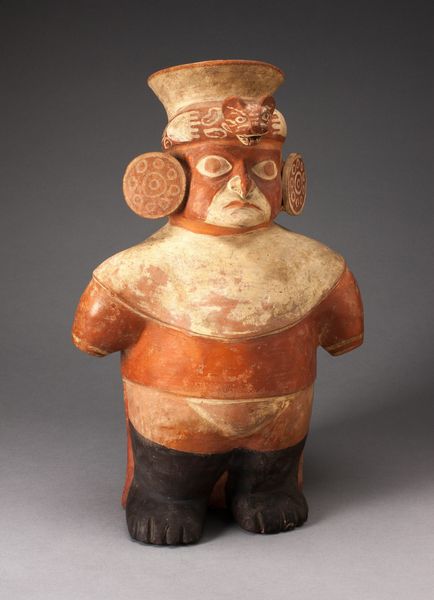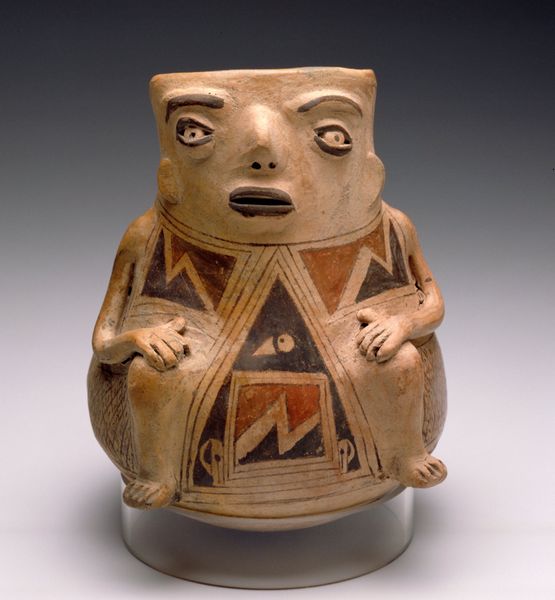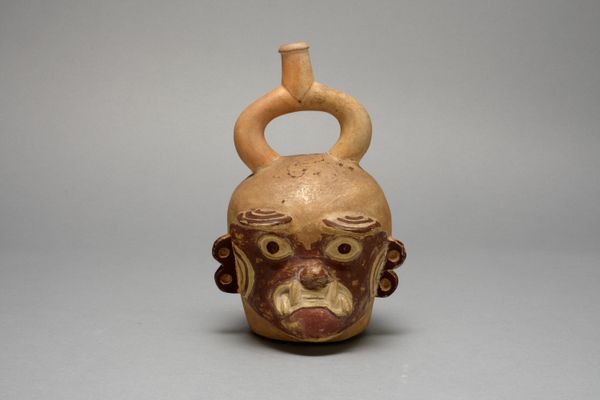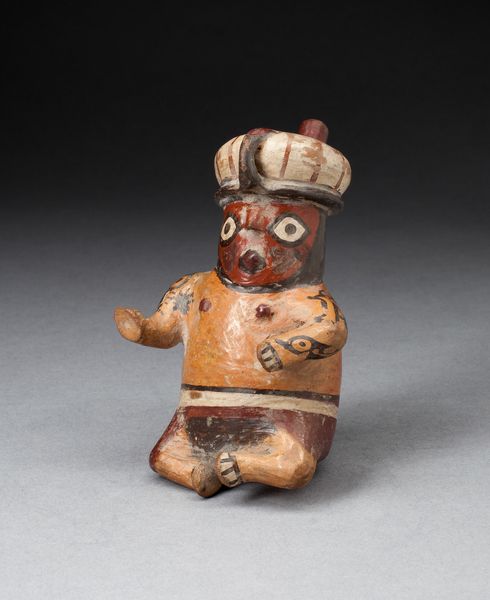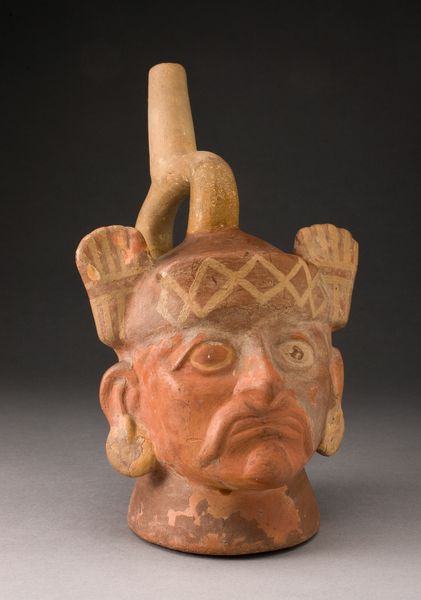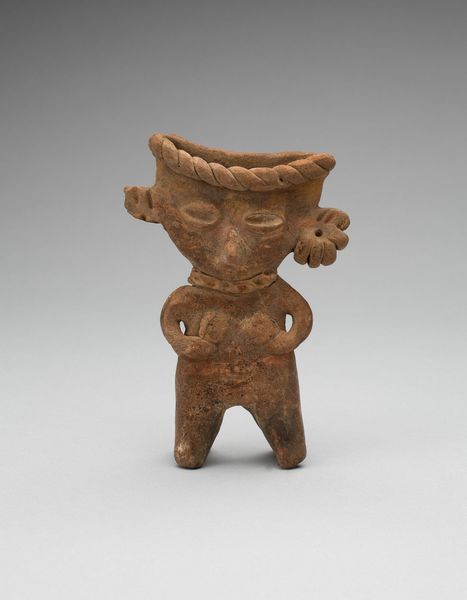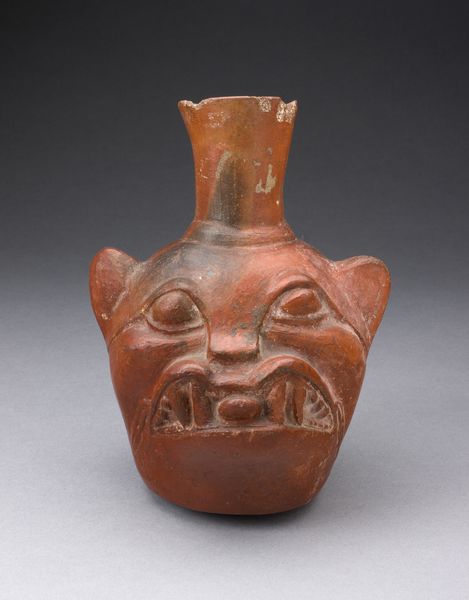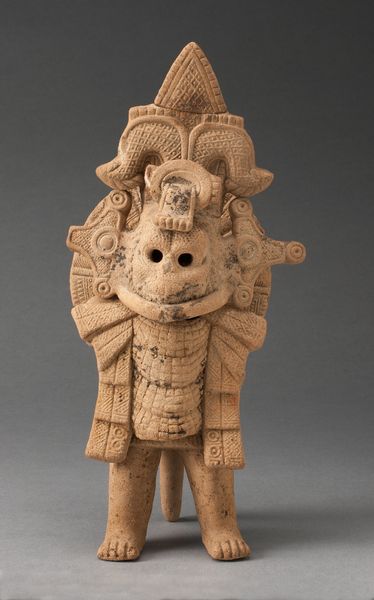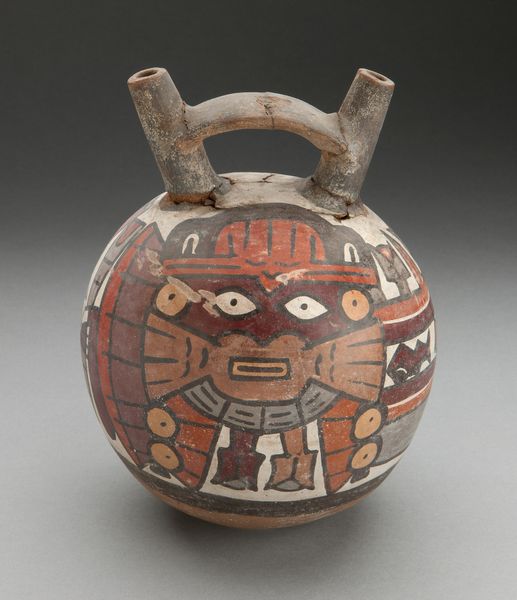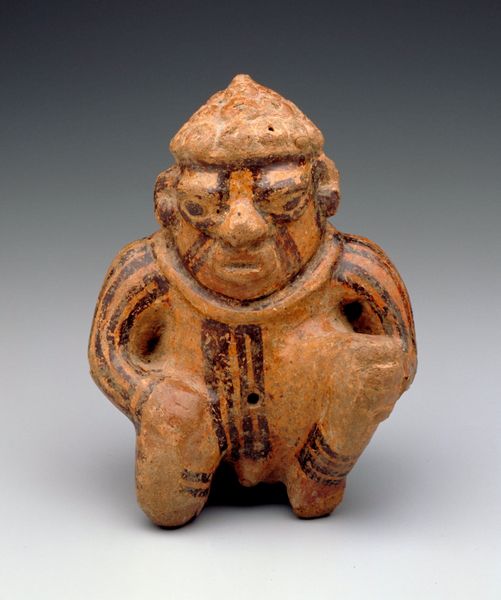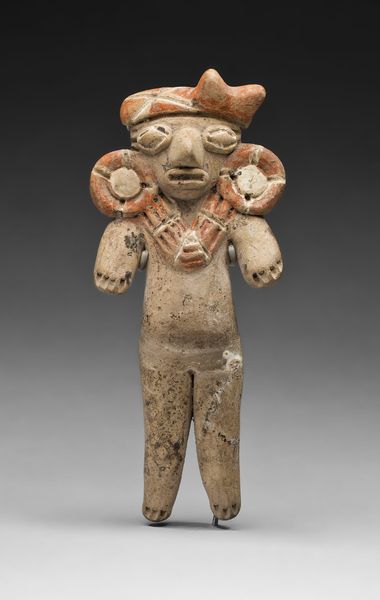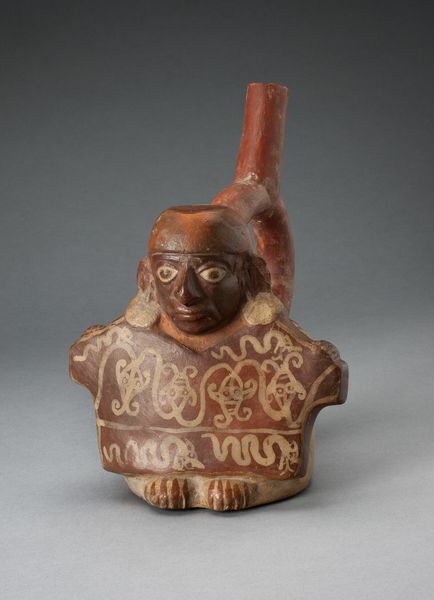
Handle Spout Vessel in Form of Sacrificer Wearing a Jaguar Headdress c. 100 - 500
0:00
0:00
ceramic, sculpture
#
ceramic
#
3d character model
#
figuration
#
sculpture
#
indigenous-americas
Dimensions: 19.7 × 19.7 cm (7 3/4 × 7 3/4 in.)
Copyright: Public Domain
Curator: Materiality speaks volumes in this Moche vessel. Editor: This is the "Handle Spout Vessel in Form of Sacrificer Wearing a Jaguar Headdress," crafted by the Moche people around 100 to 500 AD. It's a ceramic sculpture, currently at the Art Institute of Chicago. What strikes me is its raw intensity, the palpable aggression in the figure's expression. What are your thoughts? Curator: Exactly. Note the ceramic: humble earth transformed. The jaguar headdress immediately indexes power, but consider how that power is *produced*. Who mined the clay? Who shaped and fired it? Ritual is not just a symbolic act but materialized labor. Editor: That's a great point. How does thinking about labor change how we interpret the piece? Curator: It challenges the idealized view of ancient rituals. This isn't just about spirituality; it's about the material conditions, the power dynamics inherent in production itself. Look at the detail – the incised lines, the carefully molded features. This was skilled work, requiring significant time and resources. What social structures were in place to enable such specialized labor? Editor: So you're suggesting we need to think about this object not just as a ritual item but as a product of its specific social and economic context. The act of creation itself reflects existing hierarchies? Curator: Precisely. It moves us beyond aesthetics to questions of power, process, and the everyday lives of the Moche people. Editor: That makes me look at it totally differently, thinking of all that work! Thank you. Curator: Indeed, looking at the production illuminates the symbolism.
Comments
No comments
Be the first to comment and join the conversation on the ultimate creative platform.


